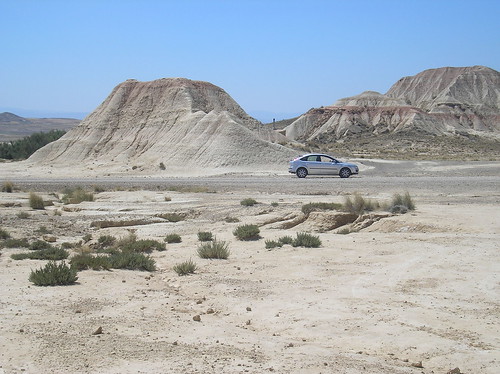National lab wants to save seven billions gallons of gasoline/year spent on running A/C in American cars
(Source: Wired)
Seven billion gallons of gasoline. That’s how much fuel America consumes each year just running the air conditioning in their cars. And don’t think riding with the windows down is the answer; the Mythbusters have long since debunked that solution.
That’s 5.5 percent of the country’s fuel use, and the Environmental Protection Agency (EPA) says auto air conditioning contributes more than 58 million metric tons of carbon dioxide emissions annually. Factor in a 50 million additional tons of CO2 due to refrigerant leakage and you have a environmentally unhealthy result that no American would be proud of.
In the age of gaining independence from oil and seeking responsible consumption, the Department of Energy (DOE) has funded the National Renewable Energy Lab (NREL) to seek solutions to make air conditioning and other similar ancillary systems more efficient. The findings of this research can help automakers hit President Obama’s target for increased average fuel efficiency and put a dent in the carbon footprint of American cars. Research on cabin cooling efficiency is aimed at three areas:
- System View: A full system analysis and redesign of the vehicle cabin thermodynamics using UV glass coatings, insulation and electrically driven compressors vs. traditional belt driven units
- Efficient Delivery: Using more direct delivery methods such as low-mass seats, ventilated, and thermo-electrically cooled seats. The approach – Why make the whole cabin comfortable when your aims are only to make the passengers comfortable?
- High Risk Research: Investigating ways to turn waste heat and ambient noise, generated by an engine, into usable energy. Thermal acoustics, for instance, uses sound waves to transform heat into usable electricity.
What’s in it for the OEMs and to us – the consumers? Here are some of the reasons:
- The Obama Administration plans to increase the average fuel efficiency of America’s cars from 27.5 mpg to 35.5 mpg within seven years. It also requires automakers to curb tailpipe emissions by 40 percent. Given the impact air conditioning and other ancillary systems has on fuel consumption, any improvements in that area will be embraced by automakers.
- Air conditioning systems have a big impact on hybrid and electric vehicles. In a typical gasoline vehicle, the air conditioning will cut your fuel efficiency 15 to 20 percent. But in a hybrid, it can cut the effective fuel efficiency and range by 15 to 35 percent. Increasing the efficiency of the cooling system could boost fuel economy and range.
- The UK’s ban of hydrofluorocarbon-134a (HFC-134a) gas, more commonly known as the stuff that makes your A/C work. Because HFC-134a is a known greenhouse gas, the ban could lead to the use of less-efficient alternatives as was the case when the U.S. banned CFCs. The UK ban was adopted in 2004 and takes effect early next year.
The National Renewable Energy laboratory says its work, if it is implemented by the auto industry, could save us 3 billion gallons of gas a year.
Click here to read the entire article.
TransportGooru Musings: The OEMs are already cranking up their own research and the market is seeing a glimpse of what’s been cooking in the labs thus far. The Energy Department in December awarded $4.2 million to Ford and $2.3 million to General Motors to help them develop thermoelectric climate control systems. From the Japanese stable, the latest model of Toyota Prius features an solar electric panel on the roof that powers the air-conditioning, saving on gallons of gasoline that most cars use to power the A/C. The solar panels on the roof of the new Prius model will provide 2 to 5 kilowatts of electricity, enough to power the A/C fan, making it a wonderful option for folks living in hot climate zones. Wanna know what’s even more fun? You can activate the A/C from inside your house (actually, anywhere within 30 ft radius) remotely using your key fob, making the car cool and comfortable when are ready to climb into it for your saturday afternoon shopping trip. You don’t have to dread getting into your car anymore after leading it outside in your drive baked under the sun. Not forget, Toyota made an awesome commercial showing off this new feature, which you can check it out here.

